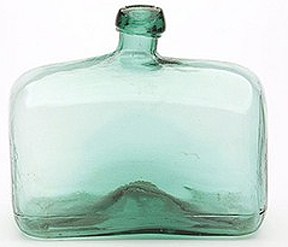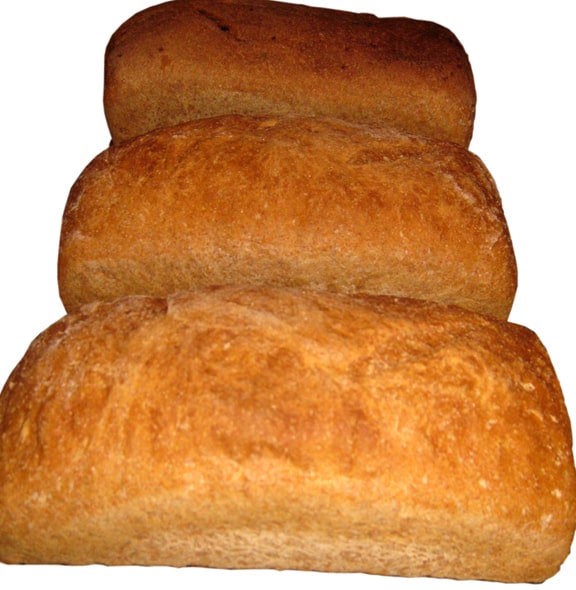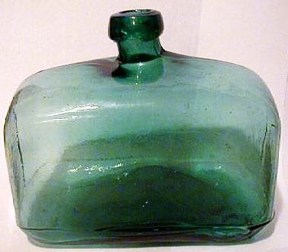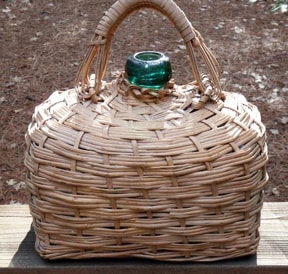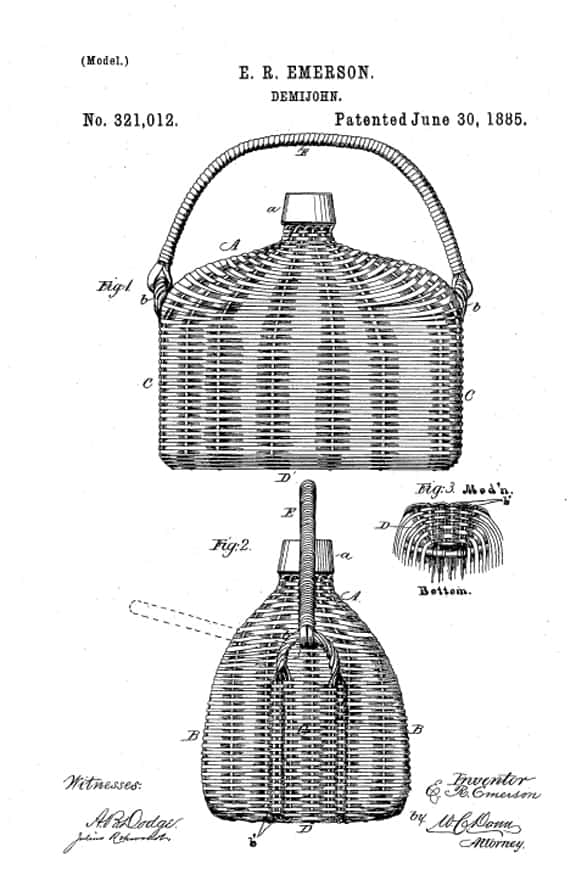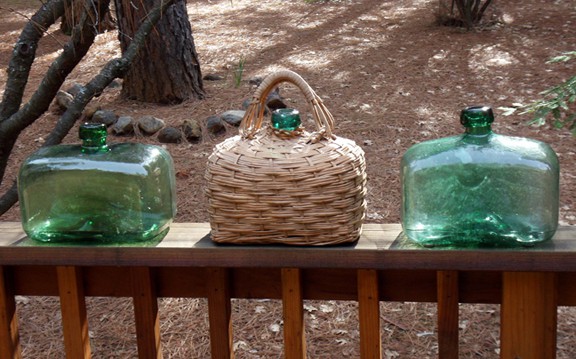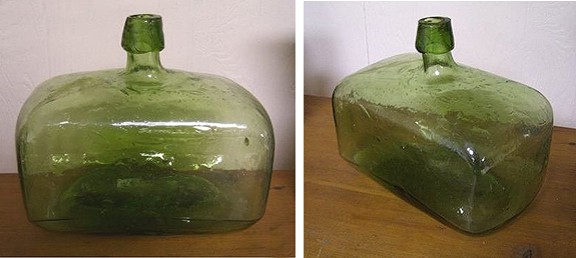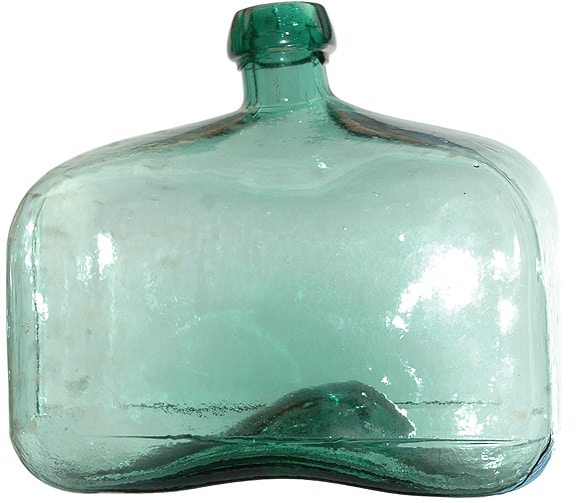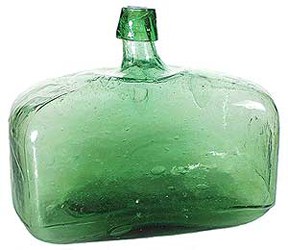 The ‘Loaf of Bread” demijohn bottles are a favorite of ours and especially my wife Elizabeth. If you see one at a show, and the condition is good, buy it fast because I have missed two (2) recently trying to find my wife at the beginning of a show when I have spotted one. They are very popular and can be found with or without wicker. They are usually a shade of green and have great glass character. The problem with buying an example with a wicker covering, you are always itching to remove the wicker to check on the glass.
The ‘Loaf of Bread” demijohn bottles are a favorite of ours and especially my wife Elizabeth. If you see one at a show, and the condition is good, buy it fast because I have missed two (2) recently trying to find my wife at the beginning of a show when I have spotted one. They are very popular and can be found with or without wicker. They are usually a shade of green and have great glass character. The problem with buying an example with a wicker covering, you are always itching to remove the wicker to check on the glass.
There is some good information online provided by John Odell (RIP). Read: BIG BOTTLES BIG HISTORY Part 2
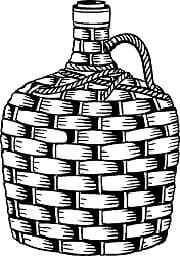 “Demijohn” is an old word that formerly referred to any glass vessel with a large body and small neck, enclosed in wickerwork. The word may derive from the name of a Persian town, Damghan, but this is not supported by any historical evidence. According to The Oxford English Dictionary the word comes from the French dame-jeanne, literally “Lady Jane”, as a popular appellation. This is in accordance with the historical evidence at present known, since the word occurred initially in France in the 17th century, and no earlier trace of it has been found elsewhere.
“Demijohn” is an old word that formerly referred to any glass vessel with a large body and small neck, enclosed in wickerwork. The word may derive from the name of a Persian town, Damghan, but this is not supported by any historical evidence. According to The Oxford English Dictionary the word comes from the French dame-jeanne, literally “Lady Jane”, as a popular appellation. This is in accordance with the historical evidence at present known, since the word occurred initially in France in the 17th century, and no earlier trace of it has been found elsewhere.
The so-called “loaf of bread” demijohn was patented (see patent below) in 1884 by Edward R. Emerson of New York to furnish a demijohn convenient to carry, compact in form, so that a number can be packed together sided by side without loss of space. Kidney-shaped bottles are another later form. Both of these types would have been mold blown to form the basic body shape.
Label under glass wicker covered demijohns were patented by Richard Dempsey of Philadelphia in 1874. His intention was to provide a convenience for druggists, liquor-dealers and others who loan bottles and demijohns to their customers for temporary use.
Wicker-covered vessels frequently also require to be permanently marked with labels descriptive of the nature of their contents, and this has hitherto been done by a tag, which is easily displaced and lost. My improve is designed to obviate the difficulties referred to; and it consists in forming an opening of the required size and shape in the wicker-work, and fastening to the body of the covered vessel a label of glass or other material containing the name and address of the owner.

